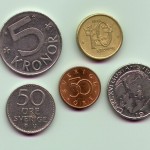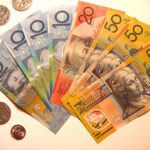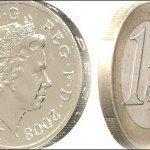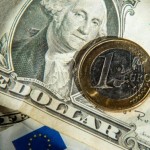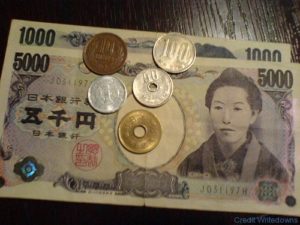 The yen traded little changed against the US dollar on Tuesday, after the Bank of Japan kept record easing, before an April sales-tax increase that may trigger the worst one-quarter contraction since the March 2011 earthquake.
The yen traded little changed against the US dollar on Tuesday, after the Bank of Japan kept record easing, before an April sales-tax increase that may trigger the worst one-quarter contraction since the March 2011 earthquake.
USD/JPY hit a session low at 103.19 at 08:00 GMT, after which the pair erased earlier losses to trade little changed at 103.29 at 09:08 GMT, adding 0.02% for the day. Support was likely to be received at March 10th low, 102.94, while resistance was to be encountered at March 7th high, 103.76, also the pair’s strongest since January 23rd.
The Bank of Japan, which concluded a two-day meeting today, kept its pledge to expand the money supply by an annual pace of 60 trillion to 70 trillion yen per year, in line with analysts forecasts. In addition, the central lowered its forecasts of exports, but raised its assessments of industrial output and investment.
In February, the BoJ announced nation’s banks may borrow twice as much low-interest money than they previously did under a second facility.
While economic growth is forecast to surge in this quarter ahead of the sales-tax increase in April, data from a sentiment survey released yesterday, showed respondents expected a sharp pullback when consumers and companies face the higher levy.
The sales-tax increase seems to undermine the BoJ Governor Haruhiko Kurodas efforts to achieve 2% inflation target, as Japanese economy is projected to contract 3.9% in the three months from April, according to a Bloomberg survey of economists, ending a projected six straight quarters of expansion.
Effective from April, the sales-tax will rise to 8% from the current level of 5%. This will be the first increase of of the levy in 17 years. The Japanese government already addressed the problem, by approving 5.5 trillion yen budget increase in December to offset the higher sales burden, but efforts seem insufficient as the Prime Minister Shinzo Abe is also expected to detail further growth measures in June to sustain momentum.
Yesterday, Japan’s Cabinet Office reported the nation’s gross domestic product expanded at an annualized 0.7% in the fourth quarter, less than a preliminary estimate of 1% and trailing analysts’ expectations for a 0.9% increase.
A separate report by the Ministry of Finance revealed the current account deficit widened to 1.59 trillion yen (approximately 15.4 billion US dollars), a record in data going back to 1985.
Moody’s Investors Service reported last month that Japan is threatened to lose its position of a net creditor, which is one of its main credit strengths, if the nation’s current account continues to deteriorate for a prolonged period of time.
Seventy-three percent of economists in a Bloomberg poll forecast the BoJ will add to stimulus by the end of September to foster the world’s third-largest economy.
Japan, which is in a process of recovery after a 15-year period of deflation, boosted its economic growth in 2013, following unprecedented central bank’s stimulus, which devalued the yen by 18% against the US dollar, the most since 1979.
Meanwhile, greenbacks demand was supported after two Fed officials commented yesterday that the hurdle rate to alter the pace of Fed stimulus cuts was too high.
Fed President of Philadelphia Charles Plosser, who is a voting member this year, commented yesterday that the recent batch of strong US economic data wasn’t enough to alter the pace of the central bank asset purchases. His statement was later echoed by Chicago Fed President Charles Evans, who will not vote on policy this year.
“Given the fact that we’ve embarked on measured reductions, it’s important to give some certainty or at least clarity to the markets on what we’re doing,” Plosser said in a Bloomberg interview. “It’s OK to continue at 10 billion. The hurdle rate for change is pretty high in either direction.”
Federal Reserve Chair Janet Yellen said last month that central bank’s officials were “open to reconsidering” the pace of reductions in monthly bond purchase, should the economy falter, in contrast with her comments made earlier in February, that US economy has gained enough strength in order to withstand reduction of monetary stimulus.
At the same time, Fed officials will try to determine whether the weakness economy has recently demonstrated is due to temporary factors, before their next policy meeting scheduled for March 18-19th.
The central bank announced in December that it will pare monthly bond-buying purchases by $10 billion, after which it decided on another reduction of the same size at the meeting on policy in January, underscoring that labor market indicators, which “were mixed but on balance showed further improvement”, while nation’s economic growth has “picked up in recent quarters.”
Federal Reserve will probably continue to pare stimulus by $10 billion at each policy meeting before exiting the program in December, according to a Bloomberg News survey of 41 economists, conducted on January 10th.
Elsewhere, AUD/USD reached a session high at 0.9043 at 6:59 GMT, while at 7:16 GMT the pair was gaining 0.16% on a daily basis to trade at 0.9035. Support was likely to be found at 0.9000, while resistance was to be encountered at March 10th high, 0.9064.

